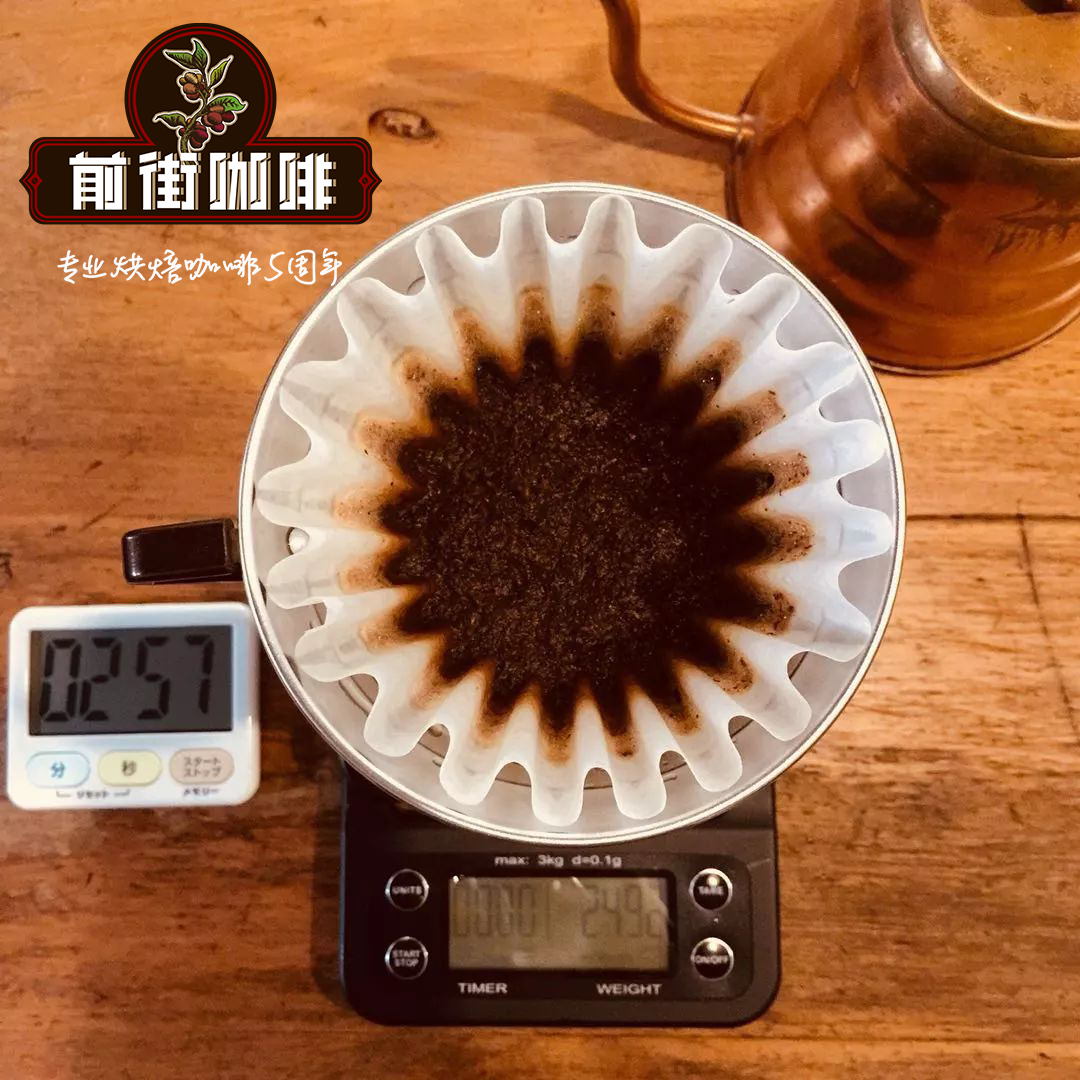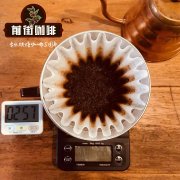Introduction to the Origin characteristics of Arabica Coffee beans the substances contained in coffee beans become fragrant

Professional coffee knowledge exchange more coffee bean information please follow the coffee workshop (Wechat official account cafe_style)
Brief introduction of varieties and aromatic components of Qianjie-Arabica
One. Types of coffee: coffee beans can be roughly divided into three categories: (1)? Arabica (Arabica) coffee tree, (2)? Robusta Coffee Tree and 3. Liberica Coffee Tree.
It is the most popular coffee bean on the market, mainly growing in the plateau regions of the Western Hemisphere, including Brazil, Colombia and other Latin American countries. Brazil and Colombia are the first and second largest coffee producers in the world, respectively. Growing height is more than 200 feet, and the temperature is moderate and stable. Arabica coffee trees are planted from seedlings and take five years to bear fruit. The main harvest period is May-September in Brazil and April-June in Colombia, accounting for about 70% of the global market. The taste is mild, with aroma and sour taste, high quality and relatively high price.
The bean shape of Arabica coffee is small, the front is long oval, the middle split crack is narrow and tortuous, S-shaped, and the arc on the back of the bean is more complete. The beans of Robastian coffee beans are larger in shape, the front tends to be round, and the split line in the middle cracks into a straight line. (the Viv Ole é Arabica coffee beans pictured below are Maragogype beans with higher grades and larger beans.)
Volatile substances:
Volatile compounds are the main source of coffee flavor, which is especially important for coffee quality. There are many kinds of volatile substances in coffee, and their existence will affect the aroma quality of coffee. Its main source is derived from non-volatile substances in raw beans which are disconnected or derived after reaction in the process of roasting. The aroma and flavor of coffee are formed as a result of thermal decomposition, other reactions or compositions, such as sugars, amino acids, organic acids and phenolic compounds. The factors affecting the volatile components of coffee include the variety of coffee beans, cultivation climate, soil conditions, preservation of raw beans, roasting temperature and time, roasting equipment and so on.
Raw coffee beans do not contain the special aroma of coffee, so they are not eaten directly and must be roasted before a large number of volatile aroma compounds are produced. After roasting, there are at least 660 kinds of main volatile aroma components in raw coffee beans, which is the food with the largest variety of volatile aroma components in all foods and beverages. The aromas produced in the process of roasting, such as hazel, cream and caramel, or with grass, smoke, burning, spice and bitterness, are mostly from volatile substances. In addition, the difference of roasting degree will also affect the flavor characteristics of coffee.
Pectin and lignin:
Pectin is a substance composed of a variety of polysaccharides, which is mainly composed of galactoic acid polymer, rhamnose and so on, with a content of more than 3%. Lignin is the insoluble residue left after the plant is treated with sulfuric acid and caustic alkali, that is, the so-called coffee fiber, with a content of about 2.4%.
Nitrogenous compounds:
The nitrogenous compounds in raw coffee beans can be divided into plant alkaloids, trigonelline (Trigonelline), nicotinic acid, protein and free amino acids.
Alkaloids:
It is mainly caffeine (Caffeine). The content of caffeine in raw coffee beans varies greatly from variety to variety. The content of Robusta is higher, the average content is about 2.2% of the dry matter, the content of mineArabica is less, the average content is about 1.2%. In recent years, low-caffeinated coffee beans have been cultivated in Java and C ô te d'Ivoire, with a caffeine content of only 0.2%. Caffeine can be removed by a variety of methods to make a variety of decaffeinated products. The caffeine content of decaffeinated instant coffee powder is less than 0.3%, and general commodities are controlled between 0.1% and 0.2%. Caffeine can be said to be the spirit of coffee, but also the most controversial issue.
Although caffeine has no odor, it has a remarkable bitter taste. Although some people want to judge the amount of caffeine by the same degree of bitterness of coffee, it is not completely successful, because the bitterness of caffeine accounts for only a small part of the bitterness of coffee, so there is not much influence on the bitterness of decaffeinated coffee.
After being digested by the human body, caffeine can be quickly absorbed and metabolized and excreted in the urine. The increase of caffeine in human blood depends on the content in the stomach. The most significant physiological effect of caffeine on the human body is the stimulation of the central nervous system. as for the dose required for changes in brain activity, which is much higher than the general normal intake, other more eye-catching physiological effects are the orientation of blood pressure, heart and blood vessels.
Trigonelline (Trigonelline):
Trigonelline is a colorless crystal with hygroscopicity and excellent solubility in water. it also has a low degree of physiological effects, mainly for the central nervous system, bile secretion and intestinal peristalsis.
The direct effect of trigonelline on the quality of coffee is very small, its bitter taste is only 1/4 of caffeine, because its existence is very small, so it has little effect on the taste. The content in raw coffee beans varied with different varieties, and the content of Arabica was higher than that of Robusta. Trigonelline decomposes quickly in the process of roasting, and its loss rate is about 50% ~ 80%, which varies according to the roasting temperature and time. In addition, trigonelline breaks down to form a variety of compounds, including non-volatile nicotinic acid. And 29 kinds of volatile compounds, among which 9 kinds of coffee aroma compounds have been identified.
Nicotinic acid
The content of nicotinic acid in raw coffee beans is very small, but it increases after roasting, mainly because it comes from the decomposition of trigonelline. But the results show that nicotinic acid continues to decompose into volatile chemicals at high roasting temperatures, so the real increase is not much.
Knowledge expansion: caffeine accounts for 0.9% Mel 1.4% in Arabica: Carneflari usually accounts for 2%, more than 3% in more cases
In short: Qianjie is a coffee research hall, happy to share the knowledge about coffee with you, we share unreservedly just to make more friends fall in love with coffee, and there will be three low-discount coffee activities every month. The reason is that Qianjie wants to make more friends drink the best coffee at the lowest price, which has been Qianjie's tenet for 6 years!
END
Important Notice :
前街咖啡 FrontStreet Coffee has moved to new addredd:
FrontStreet Coffee Address: 315,Donghua East Road,GuangZhou
Tel:020 38364473
- Prev

A brief Analysis of the Origin and Flavor characteristics of Robosta Coffee Bean
Professional coffee knowledge exchange more coffee bean information please follow the coffee workshop (Wechat official account cafe_style) front street-Robusta varieties, chlorogenic acid composition introduction Robusta originally only Arabica coffee, but at the end of the 19th century, a major pest occurred, coffee growers began to explore pest-resistant coffee varieties, resulting in Robusta
- Next

What are the characteristics of Arabica coffee beans? what does the protein content of Arabica coffee beans determine?
Professional coffee knowledge exchange more coffee bean information please follow the coffee workshop (Wechat official account cafe_style) front street-Arabica varieties, protein composition introduction Arabica coffee beans and Robusta coffee beans planting environment is very different, Arabica is more suitable for growing in the hills and mountains above 2000 meters, Robsta is planted at 600m
Related
- Beginners will see the "Coffee pull flower" guide!
- What is the difference between ice blog purified milk and ordinary milk coffee?
- Why is the Philippines the largest producer of crops in Liberia?
- For coffee extraction, should the fine powder be retained?
- How does extracted espresso fill pressed powder? How much strength does it take to press the powder?
- How to make jasmine cold extract coffee? Is the jasmine + latte good?
- Will this little toy really make the coffee taste better? How does Lily Drip affect coffee extraction?
- Will the action of slapping the filter cup also affect coffee extraction?
- What's the difference between powder-to-water ratio and powder-to-liquid ratio?
- What is the Ethiopian local species? What does it have to do with Heirloom native species?

